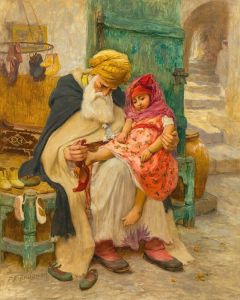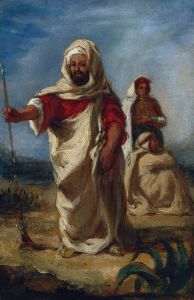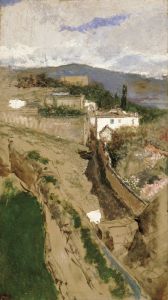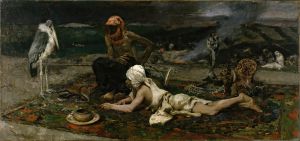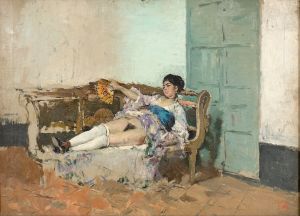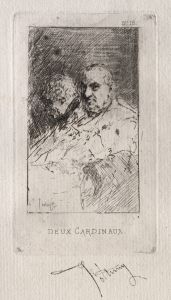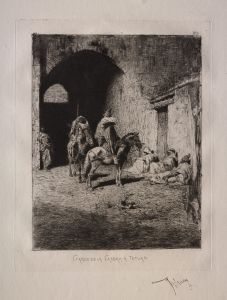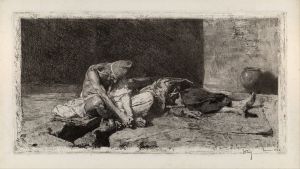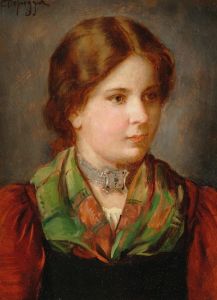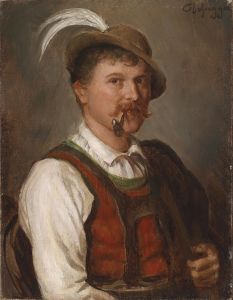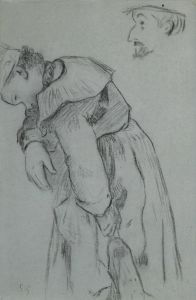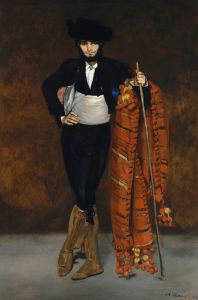
A Moroccan Woman in Traditional Dress
A hand-painted replica of Mariano Fortuny Marsal’s masterpiece A Moroccan Woman in Traditional Dress, meticulously crafted by professional artists to capture the true essence of the original. Each piece is created with museum-quality canvas and rare mineral pigments, carefully painted by experienced artists with delicate brushstrokes and rich, layered colors to perfectly recreate the texture of the original artwork. Unlike machine-printed reproductions, this hand-painted version brings the painting to life, infused with the artist’s emotions and skill in every stroke. Whether for personal collection or home decoration, it instantly elevates the artistic atmosphere of any space.
"A Moroccan Woman in Traditional Dress" is a painting by the Spanish artist Mariano Fortuny Marsal, also known as Marià Fortuny i Marsal. Fortuny was a prominent 19th-century painter known for his detailed and vibrant works, often depicting scenes from his travels and experiences. Born in Reus, Catalonia, in 1838, Fortuny became one of the most celebrated artists of his time, particularly noted for his Orientalist themes.
This particular painting, "A Moroccan Woman in Traditional Dress," is an example of Fortuny's fascination with North African culture, which he encountered during his travels. Fortuny visited Morocco in 1860 as part of a commission to document the Spanish-Moroccan War. This journey had a profound impact on his artistic style and subject matter, leading him to create numerous works that captured the essence of Moroccan life and culture.
The painting depicts a Moroccan woman adorned in traditional attire, characterized by its rich textures and vibrant colors. Fortuny's attention to detail is evident in the intricate patterns of the fabric and the delicate rendering of the woman's features. The use of light and shadow in the painting highlights the textures of the clothing and the woman's serene expression, showcasing Fortuny's skill in capturing both the material and emotional essence of his subjects.
Fortuny's work is often associated with the Orientalist movement, a genre that sought to depict the cultures and peoples of the Middle East and North Africa through a European lens. While Orientalism has been critiqued for its often romanticized and stereotypical portrayals, Fortuny's works are noted for their technical brilliance and the artist's genuine interest in the cultures he depicted.
The painting reflects Fortuny's broader artistic style, which combined elements of realism with a keen sense of color and composition. His works often featured a high level of detail and a vibrant palette, drawing viewers into the scenes he portrayed. Fortuny's ability to capture the nuances of light and texture set him apart from many of his contemporaries, earning him a lasting place in the history of art.
Mariano Fortuny's career was tragically cut short when he died of malaria in 1874 at the age of 36. Despite his relatively brief life, his influence on the art world was significant, and his works continue to be celebrated for their beauty and technical mastery. "A Moroccan Woman in Traditional Dress" remains a testament to Fortuny's skill and his deep appreciation for the diverse cultures he encountered during his lifetime.
Today, Fortuny's paintings are held in high regard and can be found in major art collections and museums around the world. His legacy endures through his contributions to the Orientalist genre and his ability to capture the vibrancy of life in his art.





